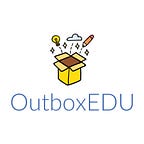Education is rapidly changing, probably more rapidly than ever. Distance learning is not new, but it is rapidly changing in these uncertain times. The classroom is rapidly moving into a hybrid state, at least. College classrooms have been remote for many years, though they have rarely been this remote. The grade school and secondary school settings are now learning more remotely. These changes mean that educational technology companies are often struggling to keep up with demands. However, they are doing a fine job, and many of the changes are in part due to these new endeavors.
Communication
Even before COVID-19, teachers were beginning to embrace products that improved education between students, parents, and teachers. Power School, Remind, Edmodo, and Wix sites have all been used in recent years to communicate with students and parents. Remind, Bloomz, Class Tag, and Class Dojo have been used as instant messaging apps for many classrooms. This protects the teacher’s private information like phone numbers but allows real-time messaging. Websites like Wix, WordPress, and even Edmodo have been used to showcase student work, communication, and essential lesson information. More companies like these are on the horizon and seek to make classroom remote learning and in-person learning seamless.
Differentiation
Students with complex learning needs often need a little extra support in live and remote classrooms. While they should always be in the least restrictive environment, we need to promote this as the general education classroom more often. Studies have indicated the benefits of student learning in the general education classroom for decades. Students thrive in classrooms with their intellectual and chronological peers. Differentiation is often a scary word for teachers. As the push is for a more inclusive environment, educational technology will help facilitate the new classroom plans. Word processing is often a spectacular resource for students with dysgraphia, and video lessons and instructions are vital for dyslexia. While there are hundreds of other uses in differentiation, these two are likely to be used the most often.
Minimizing Lost Instruction Time
Since schools first began taking inclement weather days, they have been trying to find ways to decrease the effects of missed instruction. Make-up days are fabulous, but there has to be a limit as well. Some school systems have even started limiting the latest date that children can go to school during the summer in a traditional school or how early they can begin the fall semester. For some areas plagued by hurricanes, severe weather, or ice and snow, this can be a challenge. Educational technology can minimize this problem. The use of email, meeting platforms, and online lessons can ensure that students are still able to get the material, even if roads are impassable. While power outages may hinder this, ed-tech can still minimize the effects of some of the days out of school.
Student Engagement
Students have always needed engagement for quality learning. A bored student is a disruptive student. However, ed-tech can provide a different set of resources for the classroom. Students can see the things they learn about rather than just reading them. Students can experience the Louvre in Paris one day and the Gobi Desert another. Students can do more than read a passage about Paris or African Desserts with these resources. Likewise, textbooks can be taken to the next level. Rather than just reading a chapter, the chapters can come alive with authentic video footage from events or interviews with participants.
Gamification
Video games are relatively new inventions. Though arcades have been around for decades, it has not been that long since they became available at home. For a little more than forty years, video games have been prominent in homes around the globe. However, children are more interested in these games and activities than ever. They like the instant gratification video games offer. Winning and losing are evident in these activities. With ed-tech, we can now gamify lessons to let children learn from a style that speaks to them. The Zone of Proximal Development becomes even easier to reach. Students can play games that get harder based upon correct answers and offer remediation for children who are struggling.
Expanded Socialization
While it may seem that ed tech and remote learning are hindering socialization, they can actually expand it if used correctly. Students can begin to learn from peers on the other side of the world. Classroom collaboration between classrooms does not have to be limited to those in the same building. Now, a class can work with one another from miles away. A marine biology class in California and another in North Carolina can compare data at similar times of year or day. Students can learn from and with peers in diverse environments, which will expand their socialization with others. Likewise, they will be improving their empathy and cultural appreciation with the addition of diverse learners to their classrooms.
Final Thoughts
Educational settings are changing with more remote learning happening. However, in-person classes are also evolving rapidly. Technology is also changing to meet the needs of twenty-first-century learners. They are more familiar with technology and ready for the improvements ed-tech can offer. More ed-tech companies will begin to emerge, providing general education classrooms with the technology they need to produce successful learners.
